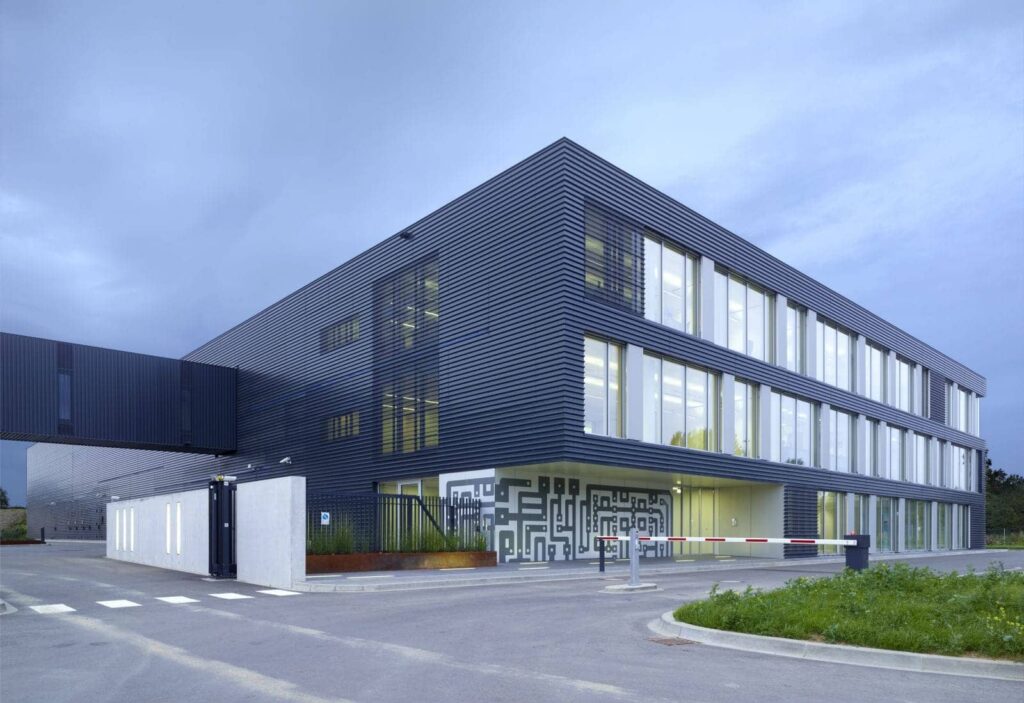
Advancements in Fibre to the Room (FTTR): Elevating In-Room Connectivity Standards
Scroll
In our increasingly interconnected world, reliable and high-speed internet access has become a necessity. Whether for work, entertainment, or communication, seamless connectivity is no longer a luxury—it’s an expectation. Enter Fibre to the Room (FTTR), a concept poised to transform how we experience connectivity within our homes and businesses. In this article, we’ll explore the concept of FTTR, recent developments, potential applications, and the challenges it faces.
Scroll
Understanding FTTR: A Paradigm Shift
Traditionally, Fibre to the Home (FTTH) has been the gold standard for bringing fibre-optic connectivity to residential and commercial buildings. However, FTTR takes this a step further. Instead of terminating the fibre connection at a central point within the building, FTTR extends it directly to individual rooms. Imagine having gigabit-speed internet available in every corner of your home—this is the promise of FTTR.
Advancements in Fibre-to-the-Room (FTTR) and the full potential of WiFi 7
The integration of FTTR with the latest wireless standards is paving the way for a new era of connectivity. Wi-Fi 7, the next-generation wireless technology, is at the forefront of this transformation. Let’s explore its impact:
- Speed: Wi-Fi 7 promises to deliver gigabit speeds over the air, with physical air interface speeds that can significantly exceed those of previous Wi-Fi generations. This advancement is set to revolutionise the way we experience online activities, from high-definition streaming to interactive gaming.
- Frequency Bands: Wi-Fi 7 expands the available spectrum by incorporating the 6 GHz band alongside the traditional 2.4 GHz and 5 GHz bands. This expansion helps alleviate network congestion and boosts overall wireless performance.
- Bandwidth and Modulation: The technology extends frequency bandwidth up to 320 MHz and employs advanced modulation techniques like 4096-QAM. These enhancements allow for more efficient data transmission, leading to smoother video conferencing, rapid file sharing, and an improved digital experience.
- Network Infrastructure: The inherent limitations of Wi-Fi 7’s short-range signal propagation necessitate a denser network of access points. These access points, connected via fibre, ensure consistent and high-speed internet access across every room.
The synergy between FTTR and Wi-Fi 7 is crucial because Wi-Fi 7 operates at extremely high frequencies with wide bandwidths, which, while enabling gigabit speeds, also limits its range. To overcome this limitation, a dense network of Wi-Fi 7 access points is required, ensuring that the high-speed signal is available throughout the premises without degradation. FTTR provides the necessary infrastructure to support this dense network, making it an integral component of the Wi-Fi 7 ecosystem.
While Wi-Fi 7 is currently available, it’s important to note that it is not yet supported by devices from all manufacturers, such as Apple. However, as adoption grows, Wi-Fi 7 is set to become the driving force behind ultra-fast and reliable wireless internet connectivity, making FTTR an essential component in achieving the full potential of this cutting-edge technology.
Potential Applications of FTTR
Residential Use Cases
- High-Speed Internet Everywhere: FTTR ensures gigabit speeds in every room, eliminating frustrating dead zones. Whether you’re streaming in the living room or working from a home office, FTTR keeps you connected.
Smart Homes: Seamless connectivity for smart devices, security cameras, and home automation systems. Imagine controlling your lights, thermostat, and door locks effortlessly. - Entertainment: Stream 8K content without buffering, engage in online gaming with minimal latency, and explore virtual reality experiences. FTTR transforms your home into an entertainment hub.
Home Offices: Reliable connections for remote work, video conferencing, and productivity. Say goodbye to dropped calls and slow downloads. - Installation Advantage: Beyond these applications, FTTR stands out for its installation benefits. Unlike traditional Ethernet cables, particularly Cat7 with their rigid protection layers, fibre optics offer a less intrusive and more flexible installation process, making it an ideal choice for modern homes.
Commercial and Enterprise Applications
- Hotels and Hospitality: FTTR enhances guest experiences by providing high-speed in-room Wi-Fi. Travellers can stay connected, stream content, and work seamlessly.
- Office Buildings: Reliable connectivity for businesses, reducing reliance on traditional Ethernet. Employees can collaborate, access cloud services, and stay productive.
- Campuses and Multi-Tenant Units: Efficiently serve multiple users with individual FTTR connections. Universities, apartment complexes, and co-working spaces benefit from this scalable solution.
- Healthcare Facilities: Support telemedicine, IoT devices, and critical medical equipment. Doctors can consult remotely, and patient data remains secure.
- Telecom Operators: FTTR opens up new business models for operators. They can offer managed services with comprehensive end-to-end remote management, ensuring guaranteed high-speed internet access right up to each room. This model not only enhances customer satisfaction but also provides a competitive edge in the market.
Challenges and Considerations
Installation and Maintenance
- Expertise Required: Deploying fibre within buildings demands skilled technicians. Proper installation ensures optimal performance.
- Connector Cleanliness: Ensuring clean connectors prevents signal degradation. Dust and dirt can impact performance.
- Avoiding Damage: Fibre cables are delicate; proper handling during installation and maintenance is crucial.
Customer Premises Integration
- FTTR as the Preferred Choice for New Installations: FTTR is not aimed at replacing existing Ethernet installations but is the ideal solution for new homes or those without any pre-existing horizontal cabling. For these scenarios, opting for fibre from the outset is advantageous:
- Higher Speeds: Fibre-optic cables deliver gigabit speeds, offering a superior alternative to Ethernet’s limitations.
- Reliability: Fibre is robust and durable, not susceptible to electromagnetic interference, making it a reliable choice for modern connectivity needs.
- Future-Proofing: Implementing FTTR is a forward-thinking strategy that equips homes and businesses for the inevitable increase in bandwidth requirements.
- Aesthetics: Fibre installations are discreet and can be designed to complement interior aesthetics, eliminating the clutter associated with visible Ethernet cables.
- Integration with End-User Devices: Recognising that the vast majority of end-user devices currently rely on Wi-Fi, and a smaller portion on Ethernet, FTTR installations will inherently include a conversion point. This could be a Wi-Fi access point to cater to wireless devices or an Ethernet switch for wired connections, ensuring that all devices can seamlessly connect to the FTTR network.
- Network Capacity and Overload Management: As the adoption of FTTR increases, it is imperative to manage the network’s capacity effectively. Service providers must be equipped to support high-speed demands from every connected room without overloading the system, which could compromise performance and user satisfaction.
Conclusion: The Practical Implications of FTTR on Connectivity Standards
The introduction of Fibre-to-the-Room (FTTR) technology is set to offer improvements in the speed and reliability of internet connections. More than just an enhancement, FTTR represents a shift in the structural approach to network implementation across both residential and commercial spaces. By integrating fibre-optic technology into individual rooms, FTTR enables a transition from centralised network access points to a more distributed model.
With the adoption of FTTR, there is potential for a gradual move away from the extensive use of visible Ethernet cables. This evolution in network infrastructure may not only streamline the physical appearance of connectivity within buildings but also contribute to the refinement of cabling standards. As FTTR becomes integrated into new constructions, it could influence both vertical and horizontal cabling practices, leading to standardised approaches that accommodate this technology.
Furthermore, FTTR’s role in future construction standards could be significant. It may prompt a reevaluation of building designs to incorporate fibre-optic readiness as a core component, ensuring that new structures are equipped to meet the demands of advanced digital connectivity.
References
Light Reading. “FTTR Technology Driving Second Fiber Boom in Multiple Markets.” March 27, 2024.
Light Reading. “Huawei Launches iFTTR OptiXstar F50, the Industry’s First FTTR+X Product for All-Optical Smart Homes.” February, 2024
Dell’Oro Group. “Fiber to the Room (FTTR) Driving ONT Purchases in China.” September, 2023
TP-Link. “TP-Link Unveils XGS-PON WiFi 7 Access Portfolio Powered by Qualcomm 10G Fiber Gateway Platform.” October, 2023
Huawei. “FTTR’s Role in Optimizing the Future Connected Home.” November, 2022


